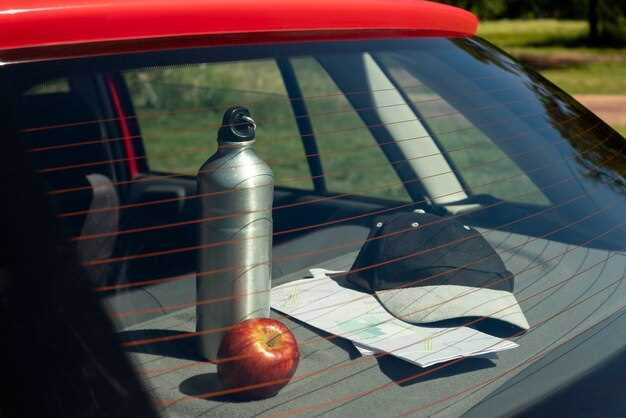
Anti-roll bars, also known as anti-sway bars, are critical components in the suspension systems of sports cars. They play a pivotal role in enhancing vehicle handling and stability during cornering, particularly under high-performance conditions. By minimizing body roll, these bars ensure that each wheel maintains optimal contact with the road, which is essential for precision steering and grip.
In essence, an anti-roll bar connects the left and right sides of a vehicle’s suspension system. When a car turns, the centrifugal forces induce body roll, causing the vehicle to lean towards the outside of the turn. The anti-roll bar combats this effect by transferring some of the weight from the outer wheel to the inner wheel, thus reducing the angle of lean. This dynamic system improves overall traction, enhances cornering performance, and provides drivers with a more responsive feel.
Understanding how anti-roll bars function is crucial for enthusiasts who wish to optimize their sports cars for better performance. Different vehicles come equipped with varying designs and stiffness levels of these bars, which can significantly affect driving characteristics. In this article, we will delve deeper into the mechanisms, benefits, and potential drawbacks of anti-roll bars, providing insights for both performance tuning and everyday driving.
How Anti-Roll Bars Improve Handling Dynamics

Anti-roll bars, also known as sway bars, play a crucial role in enhancing the handling dynamics of sports cars by reducing body roll during cornering. These components connect the left and right wheels, allowing them to work in unison and maintain better traction on uneven surfaces. When a car turns, the centrifugal force tends to cause the body to lean outward. Anti-roll bars counteract this effect by stiffening the suspension, leading to improved stability.
By distributing weight more evenly across the tires, anti-roll bars help enhance grip. During aggressive cornering, the outer wheels face increased load while the inner wheels unload. The anti-roll bar transfers some of the load from the outer wheel to the inner wheel, allowing for better contact with the road surface. This balance is crucial for maintaining control, especially in high-performance scenarios.
An added benefit of anti-roll bars is their ability to fine-tune the vehicle’s handling characteristics. Different stiffness levels can be selected to suit specific driving styles or track conditions. A stiffer anti-roll bar will decrease body roll significantly, resulting in sharper handling and a more responsive steering feel. Conversely, a softer bar can increase comfort during daily driving while still providing adequate performance in less aggressive applications.
Moreover, the strategic placement of anti-roll bars can influence understeer and oversteer tendencies. For instance, a stiffer front anti-roll bar can help reduce understeer by increasing front-end responsiveness, while adjustments to the rear bar can mitigate oversteer tendencies. This tuning capability allows drivers to customize their vehicle to enhance handling performance according to individual preferences.
In summary, anti-roll bars are essential components for improving handling dynamics in sports cars. By minimizing body roll, enhancing grip, and allowing for fine-tuning, these devices contribute significantly to a more engaging and controlled driving experience. Properly designed and adjusted anti-roll bars can transform the way a car feels on the road or track, making them vital for performance-oriented vehicles.
Choosing the Right Anti-Roll Bar for Your Sports Car

Selecting the correct anti-roll bar for your sports car requires careful consideration of several factors, including your driving style, the type of vehicle, and intended use. Anti-roll bars, also known as sway bars, play a crucial role in enhancing cornering stability and reducing body roll during aggressive maneuvers.
First, consider the stiffness of the anti-roll bar. Stiffer bars are typically better suited for track-oriented vehicles, as they provide increased responsiveness and reduce body roll. However, for daily driving or a balanced approach between comfort and performance, a softer bar may be more suitable. It’s essential to find a balance that fits your driving habits.
Next, think about the width and diameter of the anti-roll bar. Generally, a larger diameter will result in a stiffer bar, enhancing your car’s stability in corners. However, different cars have different suspension geometries, so it’s vital to choose a bar that complements your vehicle’s design and suspension setup.
Additionally, consider the adjustability of the anti-roll bar. Adjustable bars allow you to fine-tune the stiffness settings according to specific driving conditions or personal preference. This flexibility can be particularly beneficial for drivers who participate in both daily driving and competitive racing.
Material is another factor influencing performance. Common materials for anti-roll bars include steel and aluminum, with steel providing greater strength, while aluminum offers a lighter option. The choice of material can affect both weight and durability.
Finally, consult with professionals or enthusiasts who have experience with your specific make and model. They can provide insights and recommendations based on their own experiences, ensuring that you make an informed decision that enhances your sports car’s performance capabilities.
Common Misconceptions About Anti-Roll Bar Adjustments
One common misconception is that adjusting the anti-roll bar setting will automatically make a car handle better. While adjustments can improve handling characteristics, they must be made in conjunction with other suspension settings and the specific driving conditions. Simply making a change does not guarantee an improvement in performance.
Another misunderstanding is that stiffer anti-roll bars always result in better cornering performance. While stiffer bars can reduce body roll and improve responsiveness, they can also lead to a harsher ride and reduced grip on uneven surfaces. The optimal stiffness depends on various factors including tire characteristics, road conditions, and the overall suspension setup.
Some enthusiasts believe that adjustments to the front anti-roll bar should always be made independently of the rear bar. However, changes to one can significantly affect the overall balance and handling of the vehicle. If adjustments are made to one end without considering the other, the result can be oversteer or understeer, negatively affecting the car’s performance.
It is also commonly thought that only experienced drivers can detect the effects of anti-roll bar adjustments. In reality, drivers of all skill levels can feel changes in handling. While the feedback may vary in sensitivity, beginners can also benefit from understanding how these adjustments impact vehicle dynamics.
Lastly, there is a belief that anti-roll bar adjustments are only relevant for track racing. In fact, these adjustments can have significant effects on street performance and daily driving comfort. Understanding how to fine-tune these components can enhance both safety and fun in regular driving situations.












